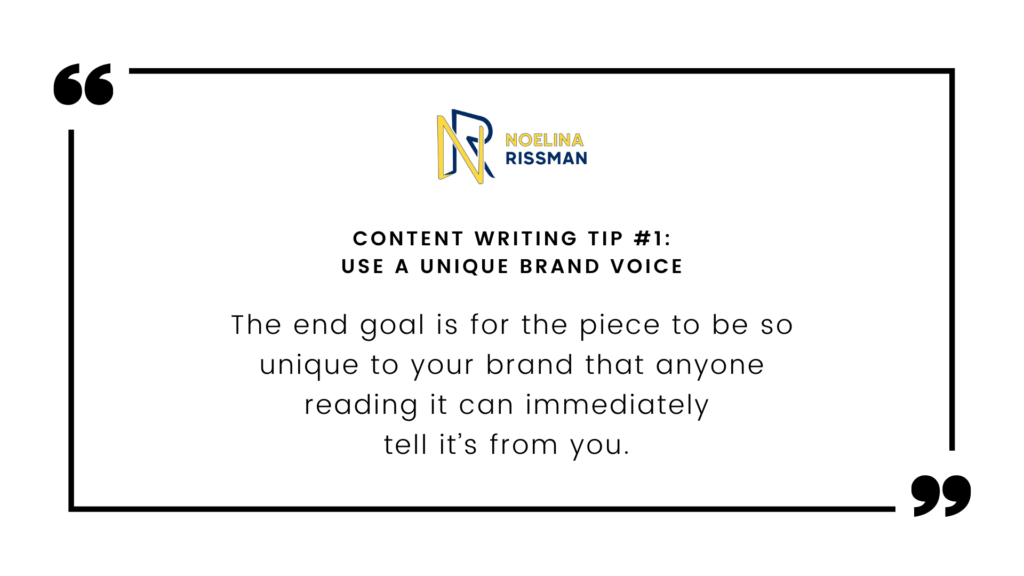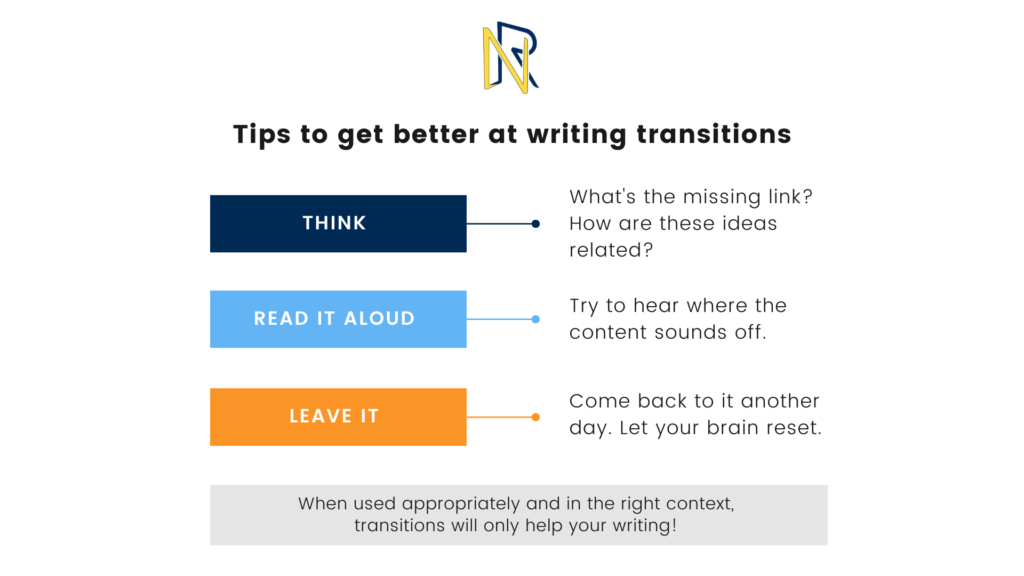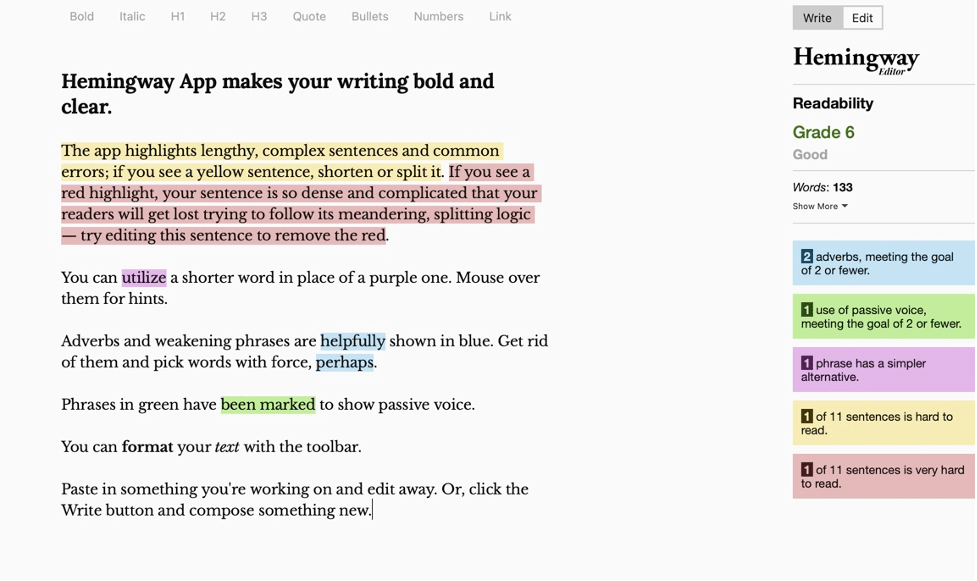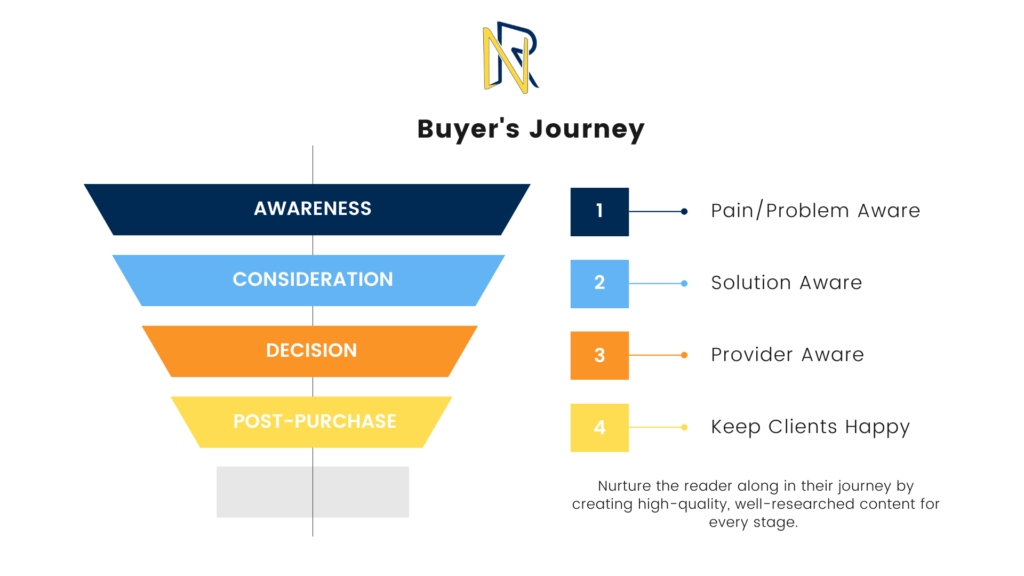About a month ago, I reviewed writing samples from over 50 content writers, and if I’m being honest, I was underwhelmed (at best).
Content writers, the time is now to get serious about your job. The industry is only going to get more competitive as the years pass.
Take a course. Read a book. Find a mentor or trusted industry leaders who can help you. Simply, invest in yourself!
Anyways, to do my part in helping lift up other content writers (after getting brutally honest with them on LinkedIn), I did a series of tips called “Back to the Writing Board.” They were based on the most common problem areas in writers’ portfolios.
This post serves as a round-up of all 10 article writing tips, for beginners and pros alike, neatly packaged into one long-form blog.
Please keep in mind this list isn’t B2C or B2B specific, and I touch on a bit of everything, including branding, SEO, writing fundamentals, and more. I also start with (what I consider to be) more basic tips and build up to the more advanced ones as the list progresses.
Either way, what’s important is that you take these content writing tips to heart and start practicing! You’ll be that much better because of it. Promise.
Table of Contents
10 content writing tips for beginners and pros
In no particular order, let’s review actionable tips that will help you create clear, concise, compelling, customer-centric content that connects and converts.
1. Use a unique brand voice
There is WAY too much bland content out there. And when everything looks the same, nothing stands out.
So, if your goal is to increase brand awareness, gain authority in the industry, and convert leads into customers, you can’t afford to blend in.
Not sure where to start?
Try this to hit the ground running:
- Review the brand’s blogs, social posts, editorial guidelines, and other digital assets.
- Take note of personality, word choice, grammar, mechanics, etc.
- Emulate it!
If the company is new and doesn’t have anything published, do this instead:
- Speak with the founder about the overall brand personality and what they want to convey to the outside world.
- Create an editorial guide.
- Use it for consistency across all the work you’re doing.
And if after all this you still can’t quite nail the voice, research other brands who share the same voice, and use their copy as inspiration.
Don’t make things any more difficult than they need to be.
The end goal is for the piece to be so unique to your brand that anyone reading it can immediately tell it’s from you. And it would take extensive editing or even a complete rewrite to make it work for someone else.

2. Use transitions
Transitions come in all shapes and sizes: words, phrases, sentences, emojis, etc.
No matter the type, they all serve just one purpose: Guide along the eyes (and brain) as you connect ideas.
Each line you write should connect to and build upon the one before it.
When used properly, transitions can prevent a mental kerfuffle, even when you present two (seemingly) different ideas.
To really bring the point home, let’s look at a small excerpt from a blog I ghostwrote for an HR tech client a couple months ago:
✅ WITH transitions
“Achieving and managing through hyper-growth is formidably difficult.
It requires executing, learning, and iterating at a fast pace, faster than competitors. It also requires transforming the organization as needed to support that growth… at the very same time.
Sure, the idea of smoking competition from the get-go can seem like a nice problem to have. But there’s a reason why two-thirds of hyper-growth startups fail.”
❌ WITHOUT transitions
Achieving and managing through hyper-growth is formidably difficult.
It requires executing, learning, and iterating at a fast pace, faster than competitors. It requires transforming the organization as needed to support that growth… at the very same time.
There’s a reason why two-thirds of hyper-growth startups fail.
(Note: This was my best attempt at undoing my work!)
See how the first one’s easier to swallow?
The ideas connect, and the reader is guided along the narrative. In general, it just flows better.
Here are some tips to get better at transitions:
- Think: What’s the missing link? How are these ideas related?
- Read it out loud and see where it sounds off.
- Come back to it another day. Let your brain reset.
When used appropriately and in the right context, transitions will only help your writing!

3. Write and format your content to be online user-friendly
Newsflash: We’re living in a world of skimmers. We need to format our content accordingly. As much as we like to think that people read every word, they don’t.
Write online user-friendly content. What does that mean exactly?
- Having descriptive headings
- Bolding key phrases
- Using shorter paragraphs
- Writing shorter sentences
- And sprinkling in emojis, GIFs, and memes (depending on the client, of course)
You want to capture and KEEP the reader’s attention.
Just like in the previous tip, you need to guide their eyes (and brains) along as they go.
To judge if your content passes the test, do this quick exercise:
- Mentally remove everything that’s not emphasized (headings, bolds, italics, etc.).
- Think: Can I understand the gist of the piece now that 90% of it’s gone?
- Yes? Good job! You’ve successfully written for the skimmers.
- No? Restructure headings, sections, sentences, and formatting until it’s good.
Basically, make reading your content as effortless as possible. If you provide a good user experience, they’ll give you their attention (and possibly money later on…).
4. Speak directly to your target audience
Personalization is the future of marketing. This doesn’t exclude content writing.
One way to ensure that your content is super personalized is by speaking directly to your target audience, or buyer personas, if you will.
Address their pain points, challenges, and goals.
At every step of the way, you need to ask yourself: What’s in it for them? Why should they care about what I’m writing???
Again, let’s look at a (fictious) example. If I’m writing an intro for a blog about tools every modern Gen Z small business owner needs in the coming year, speaking directly to the target audience could read as such:
—
“Are you the Chief Everything Officer (CEO) of your small biz?
Like, do you juggle literally everythinggg – marketing, accounting, billing clients, social media, etc.? (We gotta admit, new socials pop up quicker than ‘rona updates on the news.)
Survey says… Your small business needs productivity tools.
And if you ask us, you need a slew of others as well to ramp up efficiency and make more money.
So, with your bottom line (and peace of mind) as our top priority, we were inspired to write this blog to lend a helping hand.”
—
After reading that, you know the target audience is specifically small business owners who have too much on their plate. You also know that if they don’t do anything, money and peace of mind are at stake.
Notice how it’s all about the reader at every line of the way.
To get in the practice of speaking directly to your target audience, continually ask yourself:
- How can I tailor this even more to my target audience?
- What do they need to know here that’s specific to their goals, challenges, etc.?
- What’s in it for them?
5. Write at a reasonable grade level
If you’re a content marketing writer (I assume most content writers reading this are), you need to write at a reasonable grade level, generally 7 – 9.
Here are some tips:
- Use active voice.
- Simplify your vocabulary.
- Write short, clear, and concise sentences.
- Avoid industry jargon (that is, if your target audience doesn’t understand it).
For those who aren’t sure where to begin, use an online tool like Hemingway to get started.

In a nutshell, Hemingway helps you write for content marketing by:
- Highlighting convoluted sentences and passive voice
- Showing when phrases have a simpler alternative
- Grading you the entire time (so you know when you’ve reached your goal)
The more you use it, the more you’ll get used to writing for an appropriate grade level. And eventually, you won’t need to use it at all.
6. Opt for tasteful keyword usage
If you don’t write for Google, it’s nearly impossible to show up on top SERPs (especially if you don’t do any content distribution). Trust me. I get it!
But there’s a BIG difference between being tasteful with keywords and being distasteful…
Tasteful keyword usage looks like this:
- Primary keyword is used strategically throughout the content.
- There’s a healthy balance of secondary keywords.
- You don’t follow “traditional” keyword density rules.
Whereas, distasteful keyword usage tends to look like this:
- The primary keyword shows up in every other line.
- The text sounds robotic.
- Even non-SEO people can tell something’s up.
Yes, you’re writing for the bots. But at the end of the day, it’s the very human readers who matter most.
If you’re struggling with tasteful and strategic keyword usage, here’s one of the easiest tricks I know: color coding.
Color code the keywords throughout the content. That way, you can see where each appears in the text and damage control as needed.
Before moving on to the next content writing tip, I would like to clarify that yes, SEO does get more technical than this. It’s a constantly changing field, especially with the drop of each new algorithm.
Unless you want to specialize in SEO, I’d recommend to at least have the basics down pat so you have a broad understanding of how it all works. Only then should you dive into the weeds.
Check out this Beginner’s Guide to SEO to learn the essentials.
7. Write to fully cover a topic, not to reach word count
Wanna know what happens when you write to reach word count, and there’s nothing left to say?
Fluff. Fluff is what happens.
Look. I get it. As a content writer, the process normally goes like this:
- Client hands you a brief for a blog with a word count of 1,500.
- You start researching, outlining, and writing.
- By the time you finish, you’re only at 1,200 words.
- So, you start adding in some extra phrases here, longer sentences there, etc.
Before you know it, you’ve fluffed your way to 1,500 words. Yay!
But when you force yourself to reach word count, what happens next isn’t pretty:
- Your ideal client lands on your blog and starts reading.
- They see there’s not much substance, and it’s repetitive.
- They think: What a waste of my time!
- They leave and never return.
You just lost a lead.
And for those of you who are just doing what you’re told, then maybe it’s time for you to speak up. Let your client know you can’t add any more value. What needed to be said was said. End of discussion.
It’s OK to be generous with words as you’re writing the first draft, but be a ruthless editor. Every single word on the page needs to earn its keep.
So, what does writing to fully cover a topic look like in practice? When it’s time to edit, ask yourself the following questions with every line:
- Does this add value to the piece?
- If I took it out, would it be missed?
- Can it be said in a clearer, more concise way?
Get good at questioning the worth of every word. Eventually, it will come naturally to you, and you’ll see yourself writing clearer, more concise content from the get-go.
8. Use your own words
I’m talking about plagiarism here…
There are over 450,000 words in the English dictionary. Out of ALL those options, you want me to believe there’s absolutely NO way you can rephrase a sentence?
*Insert major eye roll*
I get that sometimes people put something into words so perfectly that you couldn’t have said it better yourself.
If you want to share something word for word, source it! (And unless you use quotations, what you write STILL better be paraphrased…)
Give credit where credit is due. No one likes to be ripped off. And sooner or later, an editor like me will catch you, and guess who WON’T be re-hired?
If you’re worried about plagiarism, run your content through an online tool, such as:
Because the truth is, in our day and age, plagiarizing is just being plain lazy.
9. Write for search intent
Before even putting figurative pen to paper, think: What’s the intent behind the search?
- Is it simply to learn?
- Is it to compare products?
- Is it to find the best deal?
Friendly PSA for all content writers…
You don’t need to move the reader through the entire buyer’s journey in one piece of content. And if I’m being completely honest here, you shouldn’t. (That is, unless you’re a copywriter writing long-form sales letters. In that case, you’re on the wrong blog.)
Remember that the buyer’s journey goes like this:
Awareness –> Consideration –> Decision –> Post-Purchase

Your job as a content writer is to nurture the reader along in their journey. You do this by creating high-quality, well researched content at every step of the way.
Content that makes them think: Wow! That was really worth my time, and I actually want to read more because it fully answered my question (and then some!).
Let’s do another quick example so you can see what writing for search intent looks like in practice.
Imagine you’re writing a blog for a client titled “Tips For Choosing the Right Health Insurance for Aging Parents.” (awareness stage)
For the final CTA, should you link the client’s product or service page? (decision stage)
Correct answer: Probably not a good idea.
A more natural transition could be to another blog titled “The 5 Best Health Insurance Plans for Aging Parents.” (consideration stage)
At the end of THAT one, yes, you could link to the product or service page. That way, it’s not so much of jump, and you’re easing the readers along in their journey.
Not just: Hey! Buy from me!
Think of it this way: Are your readers sitting with their wallets out?
No? Don’t try to push your product or service.
Yes? It’s OK for the CTA to move readers to convert (or closer towards it).
Wrapping things up, what’s the easiest way to tell what search intent is for the keyword you’re targeting?
Google it! Check out what’s in the top search engine results pages (SERPs), and go from there.
10. Show, don’t tell
Down with unnecessary, foo-foo adjectives! (See what I did there?)
When writing for yourself or a client, the best way to get your audience to like and trust you is simply by being.
A relatable quote that comes to mind is: “Actions speak louder than words.”
For the last time, let’s look at a couple examples to better explain this content writing tip.
I’m currently working with an HR tech client. Throughout all the long-form blogs I write for them, never once do I say: “XYZ is a revolutionary HR platform that enables leaders to [insert benefits].”
Instead, I write: “XYZ is an HR platform that enables leaders to [insert benefits].”
No adjectives necessary.
Prospects who land on their website can see they’re revolutionary. Most likely, they’ve been shopping around for a while, came across my client, and thought: Wow, this product is great! I’ve never seen anything like it before!
In other words, the prospects are coming to the same conclusion (that their technology is revolutionary). The main and VERY IMPORTANT difference is that it didn’t come from me as the writer.
In the same light, I don’t go around telling people I’m a strong writer who has an incredible knack for teaching boring content marketing topics in an authentic, funny way. It’s apparent in how I write and express myself. (I know. Shameless plug lol.)
So, what’s a simple way to practice showing, not telling?
Cut out adjectives. Your product or service should speak for itself without you needing to tell people how great you are.
Final thoughts on the list of content writing tips
At the end of the day, my writing advice (and anyone else’s, for that matter) should be taken accordingly.
Treat all of these content writing tips on a case-by-case basis.
For instance, some brand’s content is super direct with absolutely no transitions (exhibit A: Cleo), while others’ content is more storytelling. No one brand’s approach to doing content is better than the next. After all, brands are like humans, ever-evolving.
Learn to feel out the brand you’re writing for. Notice their voice, their audience, how their content flows, and go from there.
With practice, you’ll soon turn into a chameleon, swiftly matching any brand’s tone of voice and style with ease.
